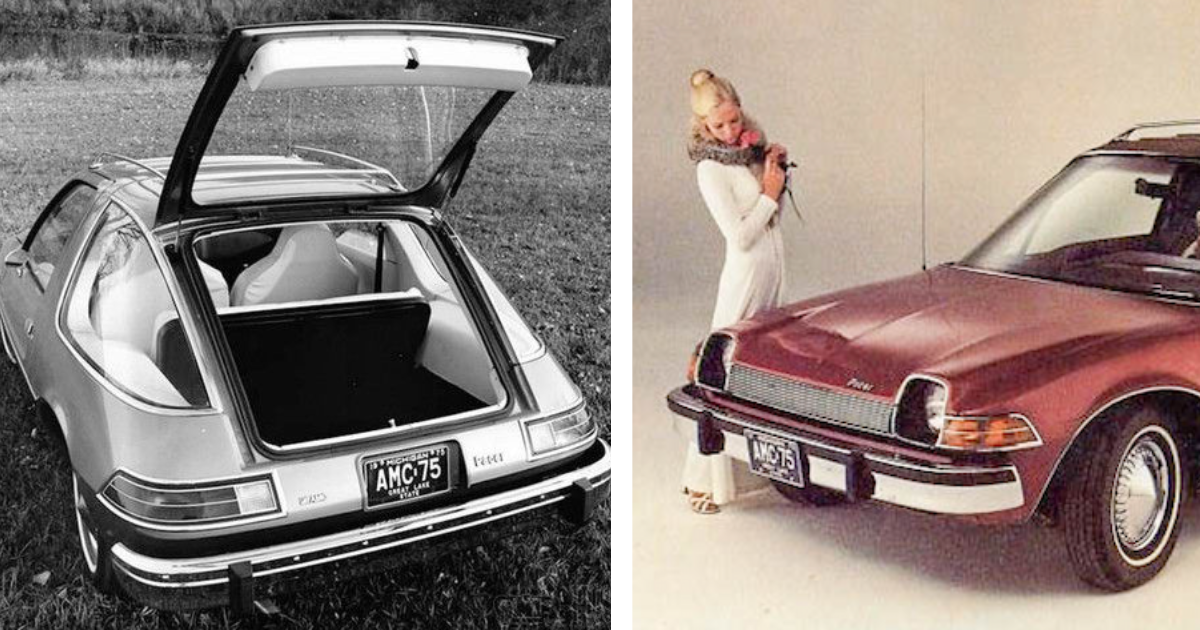
The cement truck is the unsung hero of the building industry. It can lay foundations and cause traffic jams simultaneously, thanks to its large mixer and rugged exterior. But how much cement can a single cement truck transport? It depends on the dimensions of the concrete truck.
On average, the capacity of a cement truck is 8-12 cubic yards. The average dimensions of a 10-yard cement truck are 12 m in height, 10 m in width, and 35 m in length. Cement trucks come in various sizes because of their variable payload capacities.
For Refrences check 1, 2, 3,4,5
The Size of a Cement Truck
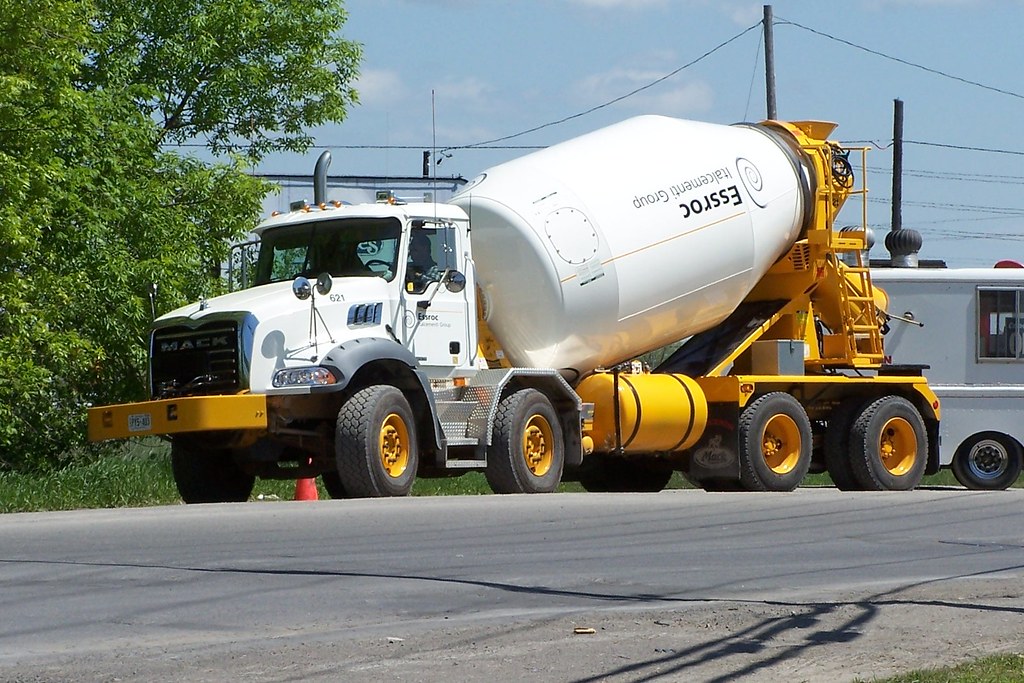
Cement trucks, also called concrete mixer vehicles, are absolutely necessary on construction sites due to their ability to transport and mix concrete. Cement trucks have a cylindrical mixing drum that spins steadily while the truck is moving.
A drum on a horizontal axis rotates to combine the cement and aggregate components thoroughly. This will ensure that every portion of the concrete batch has the same quality.

It is hard to provide universal specifications for cement trucks. However, some common ones have:
Length: Cement trucks can be about 20 feet (6 meters) long or more than 30 feet (9.1 meters) long, depending on their size.
Width: Most cement trucks are about 8 feet (2.4 meters)wide, usually quite wide.
Height: The height of a cement truck depends on the size of the mixing drum and the type of truck, but most are around 13 feet (3.9 meters) tall.
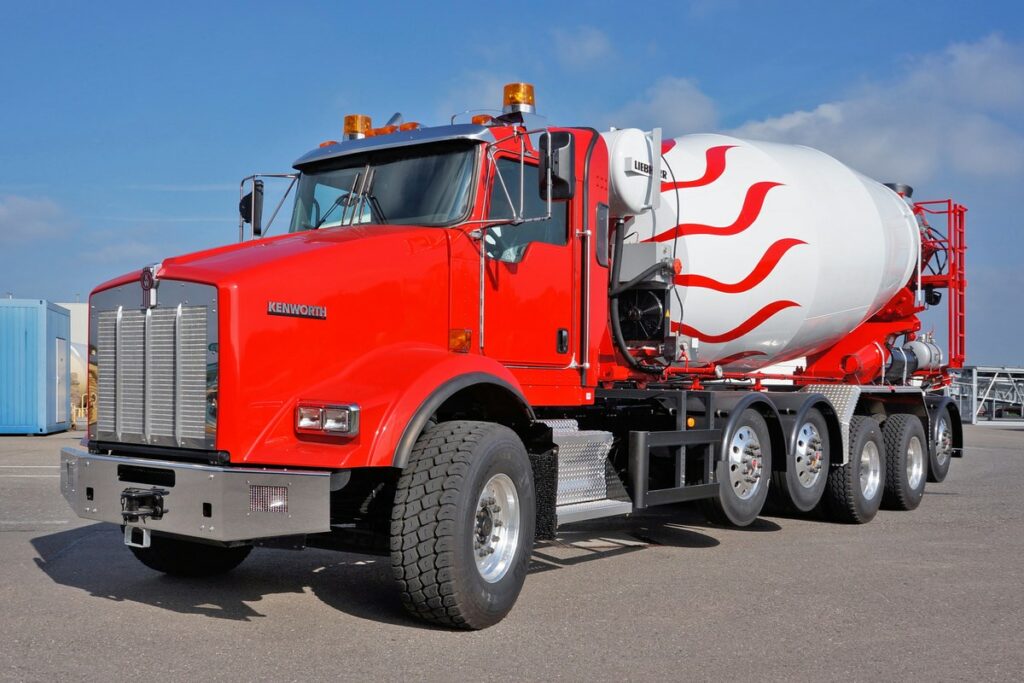
Remember that cement trucks can vary significantly in size from one model to the next and from manufacturer to manufacturer.
- Standard concrete trucks are the most common type used in construction and can carry a maximum of 10 cubic yards of concrete.
- Small concrete trucks, or mini-mixers, are typically used for smaller projects and have a maximum capacity of 4 cubic yards of concrete.
- Pickup trucks with a mounted mini-concrete mixer are convenient and cost-effective for small-scale projects requiring less than 1 cubic yard of concrete.
Height Of A Front-Loading Concrete Truck
A concrete truck with a front-discharge mixer is usually used on building sites where concrete must be poured into molds. Different models of front-discharge concrete trucks have different maximum heights.
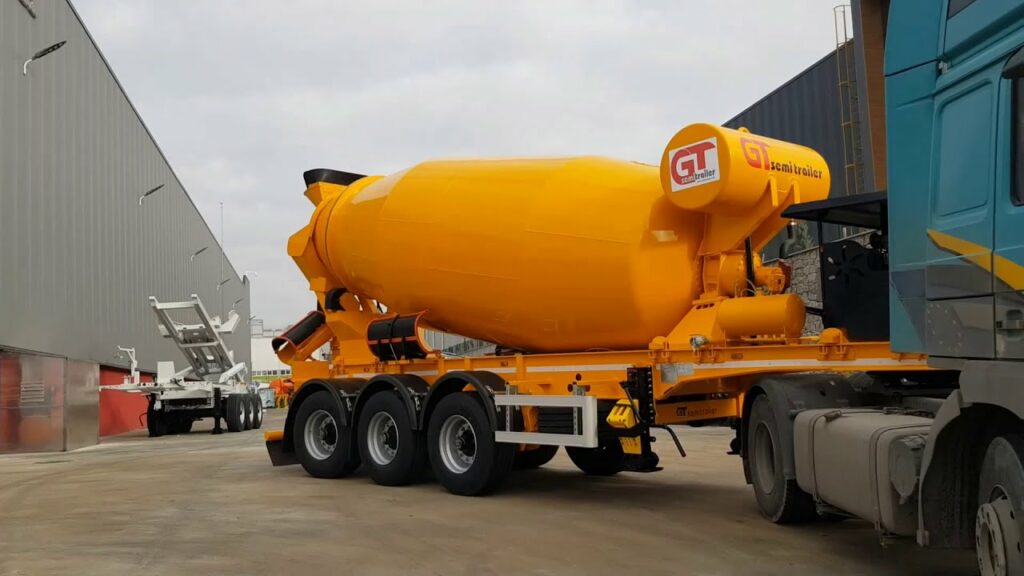
However, most trucks can only accommodate loads up to 13 feet (3.96 meters) in height to facilitate safe and efficient concrete mixing and discharging. Because of their higher ground clearance, front-loading concrete trucks are less likely to scrape against low-hanging structures than their rear-loading counterparts.
Height Of A Rear-Loading Concrete Truck
Another type of vehicle used on building sites where concrete must be poured into forms is the rear-discharge concrete truck. Different models of rear-discharge concrete trucks have different maximum heights.
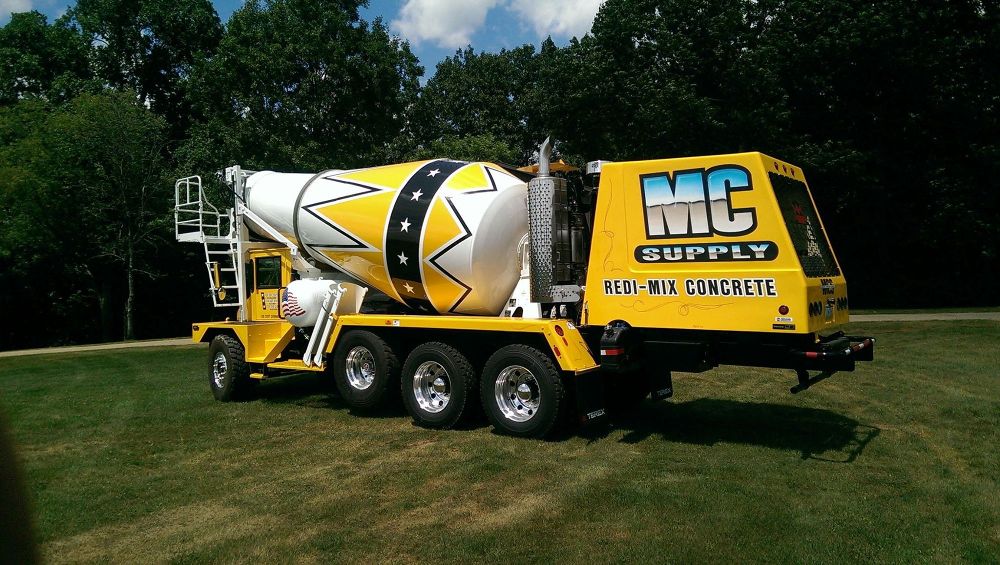
Most trucks can only accommodate loads up to 13 feet (3.96 meters) tall to facilitate safe and efficient concrete mixing and discharging. To better maneuver beneath low-hanging obstacles, concrete trucks that discharge to the rear are often shorter than those that discharge to the front.
Benefits Of Front And Rear Discharge Concrete Truck
There are benefits to both front- and rear-discharging concrete trucks. You can pour concrete into forms with a front-discharge truck without hoisting the large concrete mixer. They shield the truck bed from the concrete that would otherwise fly out during mixing.
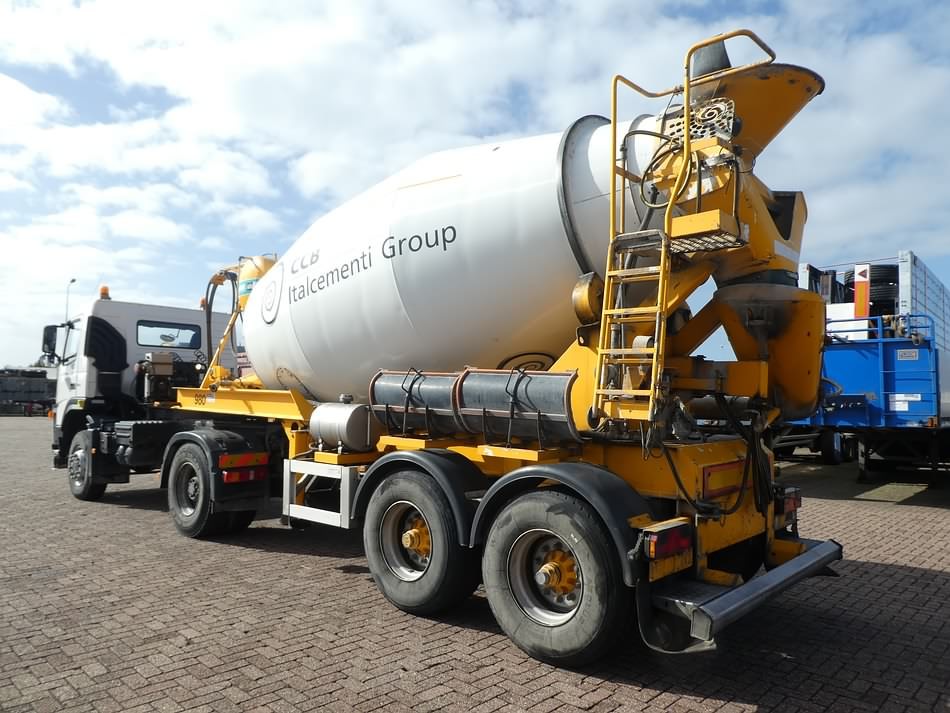
While both types of trucks are helpful, the shorter length of a rear-discharge truck makes it easier to navigate around low-hanging obstacles.
Weight of A Cement Truck
Most cement trucks weigh between 30,000 (13607 kg) and 40,000 (18143 kg) pounds (when fully loaded) due to the hefty nature of the material being transported. Cement trucks can range in weight from a few thousand to several hundred thousand pounds, depending on their make, model, and configuration.
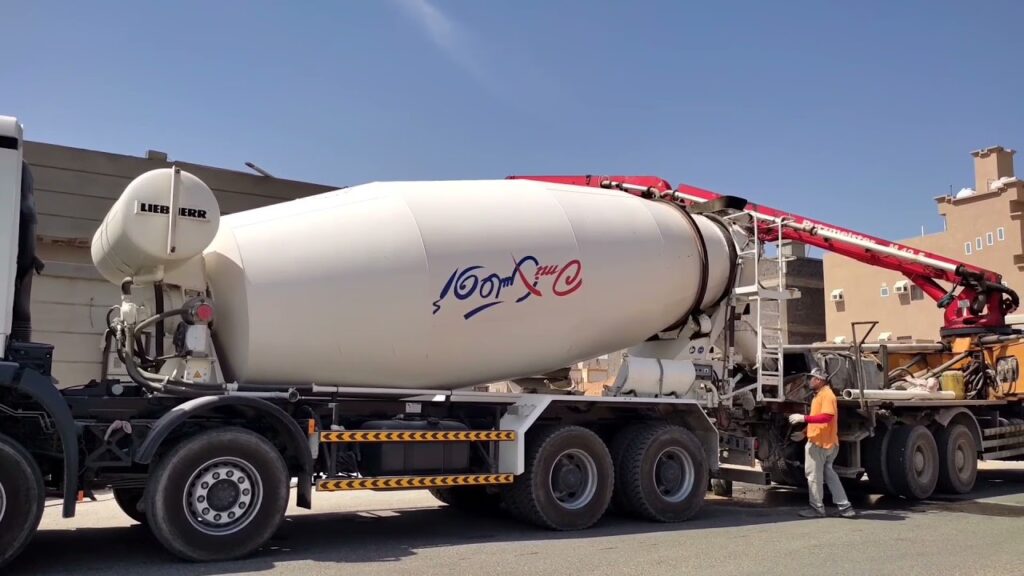
Remember that the cement truck’s weight can significantly impact its maneuverability and productivity. Cement trucks may need special permissions or licenses to operate, and they must always obey posted weight limitations on roadways and bridges.
A cement truck driver must always have the necessary documentation and know the weight limits of all highways and bridges they will cross before getting behind the wheel.
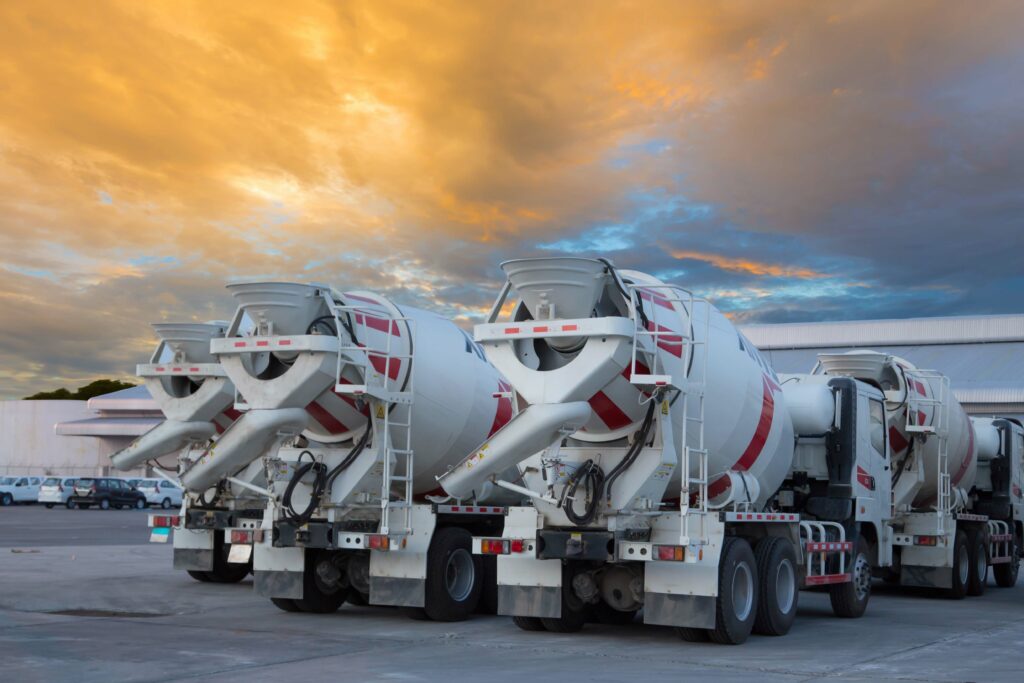
The Reach of A Concrete Truck
The extent of a concrete truck pertains to the span from the midpoint of the vehicle to the tip of the concrete spout. This spout functions to deposit concrete into molds. While the reach generally falls between 30 to 35 feet (9 to 10 meters), it can fluctuate based on the particular design of the truck.
Why Rent Concrete Trucks?
Whether you mix cement or buy it from a cement truck firm depends on your project, budget, and resources. Hand-mixing cement takes time and may produce inconsistent results. Mixing inaccuracies can damage hand-mixed concrete, including inaccurate cement-to-water or aggregate-to-cement ratios.
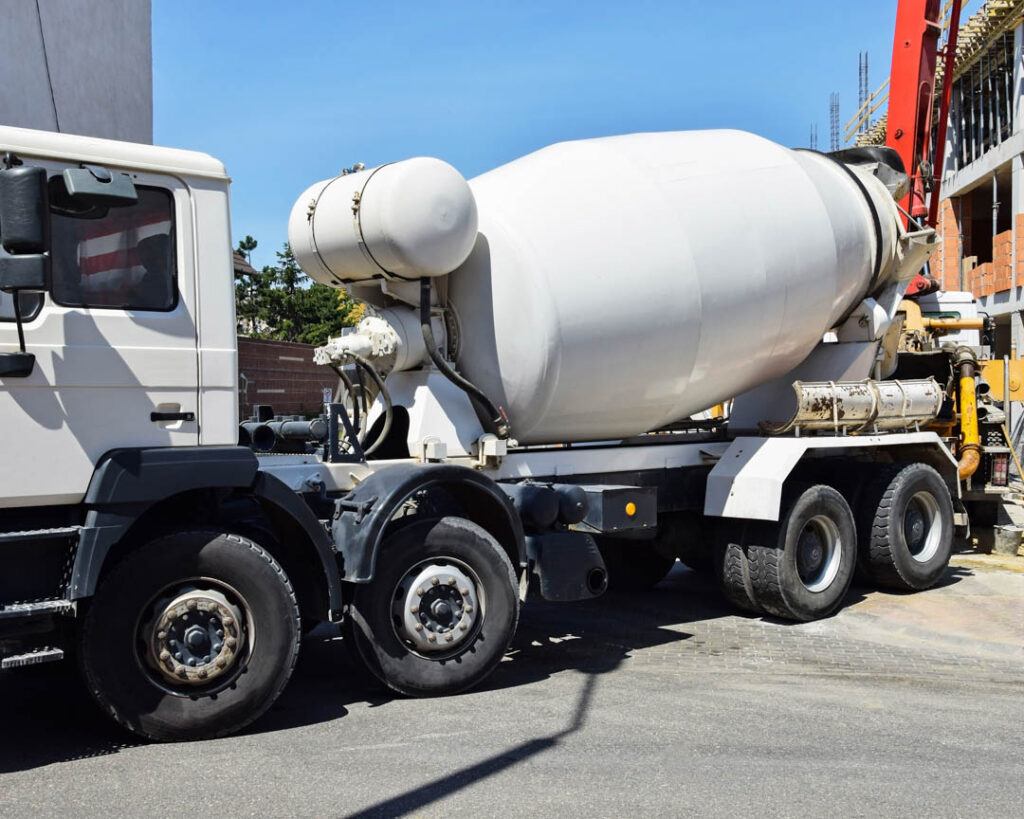
Buying cement from a cement truck company may be more practical for larger projects. Due to their cement-mixing and delivery equipment and staff, cement trucking businesses have a more constant and reliable cement supply. For smaller jobs, hand-mixing cement is cheaper than obtaining it from a cement truck firm.
Calculating how many cubic yards of premixed cement you need is the easiest way to decide. If that quantity is less than 8 yards, you’ll save time and money by mixing your cement.
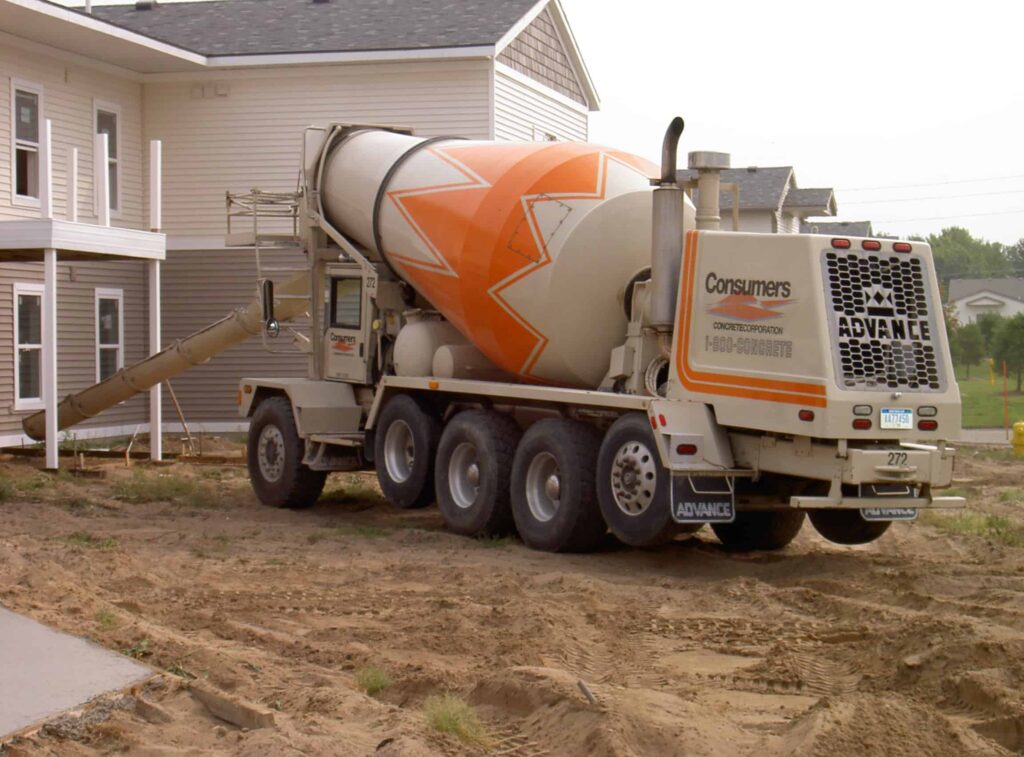
FAQs
How Long Can You Store Concrete In A Concrete Truck?
The truck can hold concrete for 1.5 hours under normal conditions. Concrete sets up if left in a mixer for over half an hour. Concrete hardens faster in hot, dry conditions. Keep the mixer running to avoid hardening the concrete.
How Do Concrete Trucks Pour Concrete?
Concrete trucks use the mixing barrel to pour concrete. As each mixing barrel spins, blades churn the concrete. The blades drive material out of the barrel instead of mixing it.
A chute receives concrete from the barrel. The chute can be extended for different tasks. Experienced drivers may put concrete 18 feet from the truck. Trucks typically pour ground-level concrete this way. Concrete is pumped to higher or longer distances through a hose.
What Is The Cost of A Concrete Truck?
The price range for a brand-new 2023 concrete truck is $200,000 to $300,000. That pertains to a truck with the mixer installed and wholly built. You can make small financial savings if you purchase the mixer and truck separately.
Are Concrete Trucks 4WD?
The majority of mixer trucks have six or more wheels. There are, however, more compact options that use a rear-mounted mixing body. The mixing body replaces the truck bed in a full-size F-series, Ram, or Chevy pickup.
Even though they aren’t as large as a regular mixing truck, they’re perfect for jobs that don’t require as much concrete. Also, 4WD models are available.
Do Concrete Trucks Have a Manual Shift?
Both automatic and manual transmissions are available in the concrete trucks available today. Older trucks were mostly manual, while most modern trucks had automatic transmissions.

Conclusion
Concrete trucks are essential components of every construction project. To pass under bridges and other low-hanging obstacles, they usually are 30 (9 meters) to 35 feet (10.66 meters) taller than standard trucks. Terex manufactures the largest of these trucks and can haul up to 40 yards, or 80 tons, of concrete.
Concrete trucks must adhere to height requirements set by regulations to guarantee the safe and efficient unloading of concrete at building sites.




